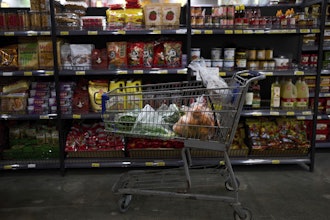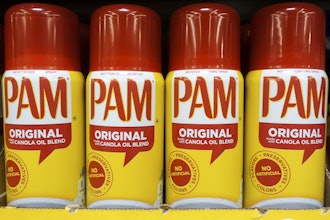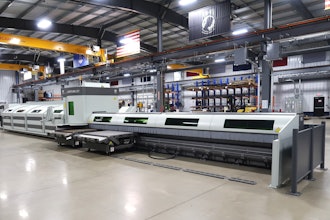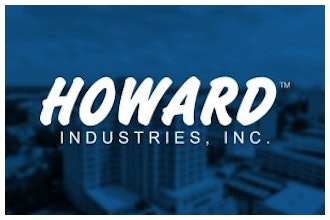This article originally appeared in the March/April 2014 print issue of Food Manufacturing.
Interview with Heather Marenda, Client Services Engagement Manager, Brady
Food Manufacturing spoke with Brady’s Heather Marenda about the top steps food manufacturers can take to improve plant safety for workers, including lockout/tagout procedures, safety audits and plant security.
Q: What unique challenges face food manufacturers regarding plant safety?
A: Food processing plants, more so than other manufacturing facilities, contain unique hazards in everyday operations, such as working in confined spaces and around wet floors, moving heavy materials, using highly automated equipment and working with and around harsh chemicals. These hazards create four unique plant safety challenges for food manufacturing locations:
1. Slips, Trips and Falls: Slip, trip and fall incidents are common in the food manufacturing environment because of the handling of raw materials and production systems that use water or liquids. Companies must take the appropriate measures to reduce these risks and keep employees safe.
2. Equipment Safety: Equipment hazards include sharp knives and blades, potential pinch points from moving machinery, and blenders and augers that can potentially pull employees into the machine. To mitigate lockout/tagout risk, meet OSHA compliance and protect employees from equipment hazards, food manufacturers must create a comprehensive, sustainable lockout/tagout program.
3. Hazard Communication/Chemical Safety: Two of OSHA’s top ten most highly cited topics for food processing facilities, it’s important for employees to be educated on chemicals and how to safely handle them. In food manufacturing, harsh chemicals are used for washdown and other cleaning and sanitation processes.
4. Confined Space Entry: Food manufacturing facilities often have a large number of confined spaces, such as silos, tanks, mixing vats and storage bins, which creates risks when maintenance is needed.
Q: How can workplace safety at a facility impact food safety?
A: Food safety starts with effective workplace safety. Employees informed about safety programs and their workplace environment will better understand proper safe-handling instructions and potential environmental risks to quality, such as cross-contamination. Facilities that employ Good Manufacturing Processes (GMP) and workplace security benefit from reduced threat of contamination and a safer and more comfortable workplace — allowing employees to produce a quality product. Safe employees produce safe product.
Q: Lockout/tagout procedures are of particular concern in automated, industrial environments. What are some best practices for lockout/tagout in food facilities?
A: When examining lockout/tagout procedures for food manufacturing environments, I recommend four industry best practices to ensure a high level of employee understanding and safety:
1. All lockout/tagout procedures should be machine specific and graphical in nature. This allows employees to follow the step-by-step instructions necessary to successfully lock out machines to OSHA standards.
2. Procedures should be multi-lingual to reach the ever-expanding global and multicultural workforce and ensure that all employees understand safety processes.
3. Procedures should be available locally and posted where employees can see them. When employees can easily locate procedures, they are more likely to utilize them correctly.
4. Companies should provide training on lockout/tagout procedures. Training is especially important as changes are made to machinery, procedures and the workforce. A yearly refresher training course for current employees also is needed.
Q: On-site audits can be a good option for ensuring compliance with safety organizations like OSHA. What should a company expect from an effective audit?
A: Audits should go above and beyond compliance to create a visually instructive workplace that increases employee safety and food safety. The most effective audits prioritize areas of risk and focus on the most pressing risk first. By focusing on one area of regulatory or best practice concern per audit, the auditor can create an actionable plan and complete a comprehensive evaluation to help a company mitigate the risk. Because of the in-depth nature of this audit approach, companies need to employ a trained safety professional who understands the corrective measures necessary to take a company from their current state to their ideal state.
An effective audit must also emphasize the involvement of key company stakeholders. All audits should play a role in a company’s internal change management process by both engaging the team and energizing them towards workplace innovation. The auditor should work with the team to provide a clear path to implement and sustain the changes recommended from the audit. This allows the company to bring the outsourced activity in-house.
This continuous improvement methodology, emphasizing sustainable internal change management, is what companies should expect from a successful audit. Covering all areas of concern or a general overview audit will result in slow workplace improvement with the risk of missing key aspects of regulatory and industry best practice requirements.
Q: What are some of the top plant safety and security measures that every food company should have in place?
A: Important safety measures include:
- A Comprehensive Lockout/Tagout Program: Lockout/tagout is critically important for food manufacturers to increase safety and productivity and reduce down time, fines, accidents and fatalities. Companies must be sure they have a complete program that includes highly visually communicative, machine-specific procedures and annual employee training.
- Chemical Management and Knowledge: It’s critical that employees are educated on the chemicals they handle in the production and cleaning processes. To improve awareness and align with OSHA’s updated Hazard Communication Standard, companies should update their company policy and internal chemical inventories, revise container labeling and material safety data sheets, and provide training on these revisions and the HazCom standards.
- A Highly Visually Communicative Workplace: Safety, lean and instructional signage throughout a facility improves both worker safety and productivity. These visual communications provide critical information regarding workplace risks and processes. They are most effective when easily spotted throughout the facility, especially near equipment, shelving, floors and doorways.
Important security measures include:
- Access Control: Companies should have full control and a record log of who is entering and exiting their facility. This will allow the company to not only prevent incidents from happening, but also review any incidents that occur. For a greater level of security, it is best practice to integrate an access control system with video security.
- Visitor Management: All facility visitors entering and exiting a facility, including suppliers, customers and logistics providers, should be tracked and attended at all times. Best practice visitor management includes time-expiring badges to clearly indicate if and when a visitor has stayed past his/her allocated time duration.
- Employee ID: The best way to ensure only authorized employees and individuals are within a facility is to mandate a visible picture ID at all times. This makes it easy to identify those within the workplace who are not supposed there.
For more food industry news and information, subscribe here and follow us on Twitter, Facebook or LinkedIn.






















